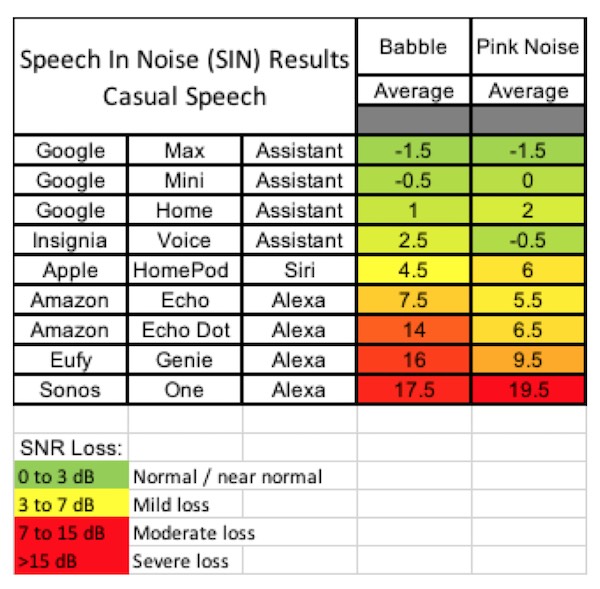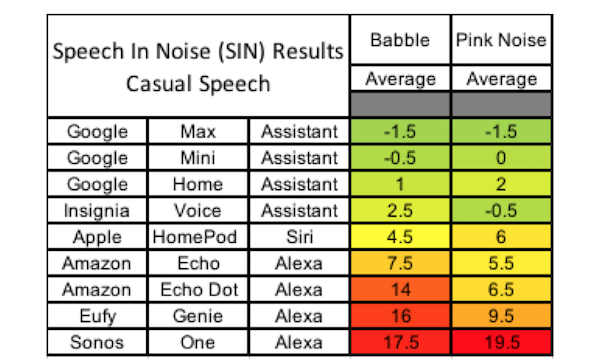Sonos One, Eufy Genie and Amazon Echo Dot Exhibit Characteristics of Hearing Loss in New Study
Vocalize.ai has a new study that suggests Sonos One and Eufy Genie smart speakers exhibit characteristics commonly indicating severe hearing loss in humans. Amazon Echo and Echo Dot fall in the moderate hearing loss range. What is this all about? Have you ever tried to talk to your Echo or Sonos One while another conversation was taking place nearby? Did you need to repeat yourself? Could the device perform the task?
Vocalize.ai has a test suite designed to compare performance of smart speakers under a variety of conditions using audiology standards as a baseline. The company’s first study compared performance in terms of word recognition, speech recognition and wake word sensitivity. However, those tests were conducted in “clean” conditions with no background noise.
A new study sought to compare smart speaker performance with the presence of background noise. The results show that the Amazon Alexa-driven smart speakers fared worse than those relying on Google Assistant with Siri falling in between them. We also see in the data that in-house smart speakers such as Google Home and Amazon Echo outperform the third-party devices manufactured by Google and Amazon partners.

Background Noise Standards and Smart Speaker Performance
Vocalize founder Joe Murphy suggests this is a reasonable test because smart speakers are often used in the home while other conversations are underway, a television show is on or typical household noises are present. These represent normal working conditions. Mr. Murphy explains:
“Four-Talker Babble is the standard background noise used by audiologists when checking human hearing for speech in noise. This simulates background conversation and is sometimes referred to as the cocktail party effect — basically tasking the listener to track a specific voice in the presence of multiple talkers. In the Vocalize.ai testing this is used to provide a simulation of detecting speech while either a TV is playing nearby or another conversation is occurring nearby. Both are common household events for smart speaker speech detection.
“Pink Noise is similar to white noise, but the lower frequencies are amplified. Some in-home sources of pink noise would be a fan running or the sound or rain on the windows. So using both Babble and Pink Noise provide coverage for different real world use cases. In general babble is more challenging challenging for speech recognition systems and their noise cancellation algorithms.”
The Google Assistant supported smart speakers all performed well and compared to humans, showing no signs of hearing impairment. Amazon Alexa supported devices didn’t fare as well. Google devices also outperformed Amazon Echo in two of three categories in the previous Vocalize study. To date, we have focused largely on what smart speakers can do, how many third-party voice apps they support and how their audio sounds. Vocalize is inserting a new set of considerations in terms of how well these device recognize our interactions under a variety of conditions. These are factors that consumers over time may begin to use as differentiators when deciding which smart speaker is best suited for them.
U.S. Smart Speaker Market Share: Apple Debuts at 4.1%, Amazon Falls 10 Points and Google Rises









